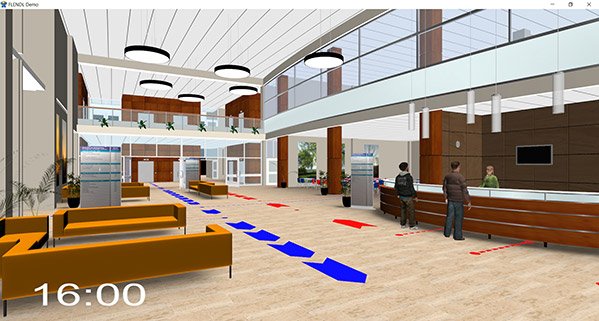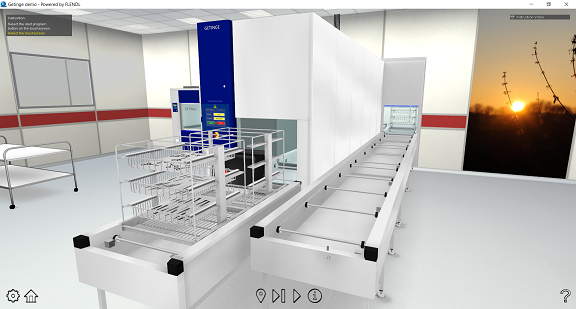Industrial VR
3D CAD has become a common tool for designing plants, buildings and equipment. These CAD models are often very detailed, with technical abstract looks. As a consequence, they are perfectly suitable for engineering purposes, but usually less appreciated by a broader audience. With a little effort, these 3D models can be transformed into lighter, much more photo-realistic walk-through models that are more suitable for communication with the less technically oriented general public.
Virtual Training
Virtual Reality (VR) based training can be a very useful technique as a replacement or addition to hands-on training. VR training applications can be used for installation, maintenance or diagnosis training purposes. Typical situations where VR training is used are:
- Installation, operation or maintenance training where the availability of the equipment is low or absent. This is the case when equipment is still in a design or construction phase, or when the costs for using the equipment for training purposes are too high.
- To improve diagnosis and troubleshooting skills for identifying and solving rare problems.
- Training in environments that are hostile to human beings or with hazardous equipment where the risk of hands-on training is too high (e.g. nuclear plants, radiation equipment or in deep sea or space).
- Training of calamities and emergency shut down procedures that cannot be trained without interrupting the continuation of the process (e.g. power failure or gas alarm).
- Instructing workers for complex construction or demolition activities such as decommissioning of offshore platforms.
- To prepare trainees and improve the efficiency of the hands-on training.
Online VR training can be accessed anytime anywhere and can be such that the trainee is forced to strictly follow a procedure. This is often the case for installation and maintenance procedures. For diagnosis trainings, usually the behaviour of equipment is simulated and more in-depth understanding of the concept by the trainee is practised.
Design Analysis
Currently, specialized 3D software is already being used for designing buildings on a detailed level. However, in general these software packages do not provide the immersive feeling a VR based application will give you. Experiencing a building as if it was built, by simply walking anywhere you like, is only possible in a virtual environment. The same is applicable for prototypes of a new product, to see how it operates, demonstrate the mechanical movements and to show how it can be accessed and maintained. Applied VR can be used to:
- Develop virtual prototypes of equipment, industrial installations or buildings. The photo- realistic looks and easy real-time walkthrough make it possible to explain and demonstrate a design to a broader audience.
- Analyze the operability and maintainability of your design. In situations where space limitations are an issue, simulation of e.g. a maintenance procedure in a virtual environment will result in valuable information to improve the design.
- Visualize data that is not easy to present in graphs, tables or drawings. This can be calculation or simulation results that are location and time dependent. Examples are logistics flows, simulations of environmental parameters like temperature and humidity, but also process related simulation results.
- Simulate construction or decommissioning processes by showing step by step the scheduled activities in time.

Industrial VR systems are primarily using large monitors projections for multiple participants training. Contrarily, head-mounted displays are usually aimed at single user involvement and their application in process industry is limited.

In virtual reality the users following building logistic routes can actually collide with the objects and structures and not only pass through like in other 3D CAD programs/tools.
